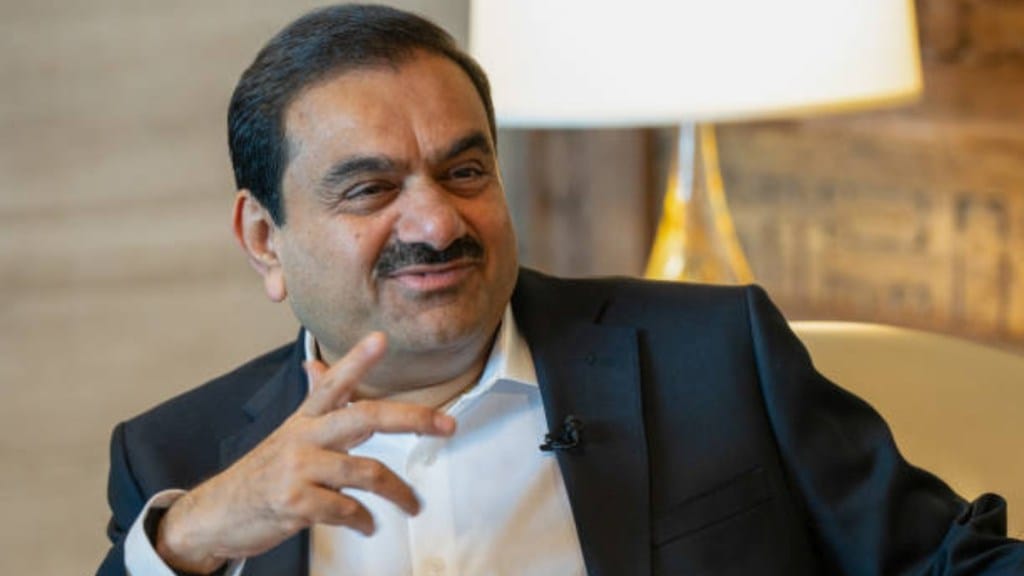By R. Chandra Mouli
He wears success easily on his sleeve. On the ground, he is the man not many get to meet, and everyone is after. Gautam Adani, Chairman of Adani Group, prefers to keep a low profile, yet stands out like ‘Adani One,’ the aviation infrastructure brand that reflects his singularity.
His persona attracts more column inches, online impressions, and airtime than his peers. While challenges follow him like a shadow, he goes about his workday, comfortable in his nonchalance.
Nemesis from New York?
Will the business tycoon, whose armour even tungsten-tipped research reports could not pierce, turn into putty with the newest nemesis at his doorstep – an indictment by the US Department of Justice (DoJ)?
We are familiar with charges against business leaders in India. Many we brush off as politically motivated, others we cite as proof of our tough-as-nails enforcement system, and in some cases, we acknowledge that regulatory authorities will swing into action where deviations are so blatant, compliance almost nil, and the perpetrator is found to have a brain as thick as four posts.
However, allegations from a superpower’s judicial system are to be taken seriously. First, let’s understand what the DoJ is saying, for which the source is a Press Release dated Nov. 20, on the DoJ website.
As per United States Attorney’s Office, Eastern District of New York (E.D.N.Y. Docket No. 24-CR-433 (NGG), a five-count criminal indictment has been announced in federal court in Brooklyn, charging executives of an Indian renewable-energy company with conspiracies to commit securities and wire fraud and substantive securities fraud for their roles in a multi-billion-dollar scheme to obtain funds from U.S. investors and global financial institutions, based on false and misleading statements.
The indictment (akin to a charge sheet) alleges schemes to pay bribes to Indian government officials, to lie to investors and banks to raise billions of dollars, and to obstruct justice.
As per the indictment, a $250 million payoff was planned, to obtain solar energy supply contracts with the Indian government, which were projected to generate more than $2 billion in profits after tax, over 20 years.
Where’s the beef?
To cite an American anecdote, 40 years ago a fast-food chain came up with the slogan, “Where’s the Beef?” to convey that their burgers had more meat than competitors. Switching to Hinglish, we could ask, “Where’s the moolah?”
Generating almost Rs 2,000 crores in cash by a corporate is a challenge in the India of today. Withdrawal of a large sum of money from the bank teller rings alarm bells in our banking system. Moving around with suitcases filled with currency is relegated to Bollywood films of the 80s.
Assumed to be guilty
Lastly, the Press Note states that charges in the indictment are allegations, and the defendants are presumed innocent unless and until proven guilty. However, elsewhere it says the defendants “falsely denied’ their participation in the Bribery Scheme to representatives of the FBI, DoJ and SEC at meetings in Brooklyn, New York.
The word denied is understandable. With the wording as ‘falsely denied,’ has it been assumed their statements are false, before the commencement and conclusion of proceedings?
Going green… with envy
Last year, the Hindenburg Report came up with a set of views. The Indian media picked up the news, ignoring that Hindenburg had taken a short position on Adani stocks, and the claimant stood to gain from a significant drop in the value of Group indices.
While Adani heads a truly diverse Group, with projects and plans that encompass copper production, mining, natural gas, food products, defence and more, it is his green energy foray that is making news around the globe.
Also read: Googly from BCCI: Breather for Byju’s?
Why? In a world that speaks of achieving carbon net zero in conclaves and policy statements, he is among the few getting close and fast to the goal. At Khavda, Gujarat, group company Adani Green Energy Limited (AGEL) is putting up what will become the world’s largest power plant, and you won’t see a single chimney in an area that encompasses five times the size of Paris city. The sunny and windy expanse of barren land will help generate solar power during the day and wind energy in the evening.
A standalone rooftop solar panel installation has a power output of around 250-400 watts. The Khavda plant will achieve a capacity of 50 Gigawatts of green energy in phases by 2030. It will help India avoid an estimated 58 million tonnes of CO2 emissions annually, according to AGEL. To get to net zero emissions, fight global warming, and truly transform the landscape, power generation in gigawatts is the scale India needs.
Another fact about AGEL – not relevant to the indictment. The Company has redeemed 100% of the USD 750 million raised through its bond issue.
As for the US market, Adani has plans of his own. While conveying congratulations to Donald Trump on becoming the president-elect, he announced the Group will invest USD 10 billion in the United States in projects related to energy security and infrastructure.
A price of pioneering?
The intensity of recent allegations elicited a reply from Adani. While addressing the gathering at the 51st India Gem & Jewellery Awards event in Jaipur on November 30, he made this statement:
“Roadblocks the group faces are the price of pioneering. The more bold your dreams, the more the world will scrutinise you.”
(The writer, R. Chandra Mouli, is a communications consultant based in Mumbai, who served for three years as a journalist in the USA. Views expressed are his own and not necessarily those of financialexpress.com).

